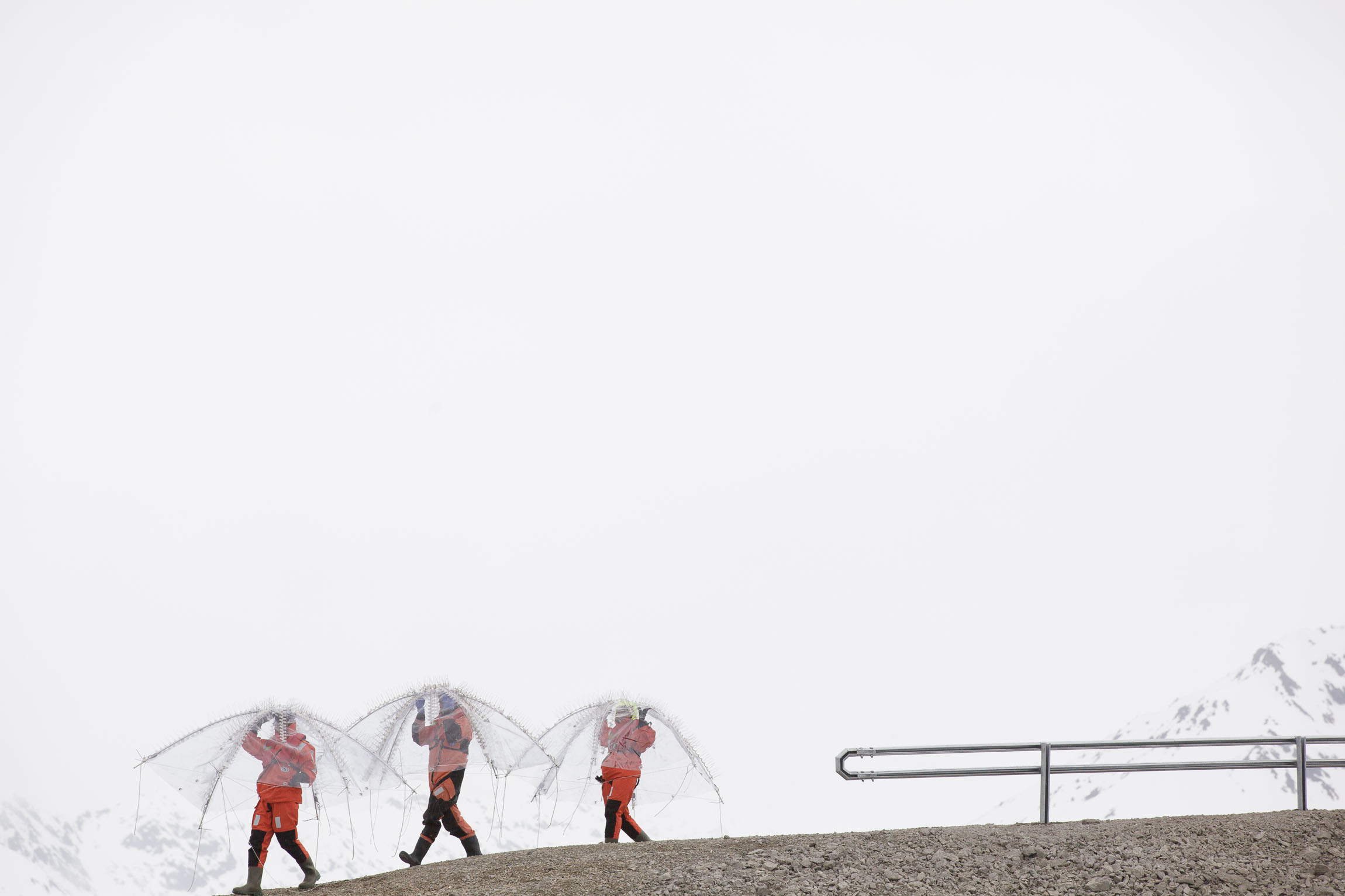
The pteropod (or sea butterfly) is a shell building zooplankton, at risk from ocean acidificiation.

Scientists carry the ‘roofs’ of the mesocosms down to the shoreline at Ny Alesund. These devices will keep bird droppings from entering the mesocosms.

A small boat sets out over Kongsfjord from the harbour of Ny Alesund containing researchers who will check on the mesocosms.

This instrument is called the spider and is used for injecting salt solution and Co2 gas into the different mesocosm samples.

Foraminifera, a type of plankton. Photographed with a macro lens during ocean acidification research.

The rim of one of the 'bags' which contain a column of captive ocean water inside. The device in the centre with the arms is called the 'spider' and is used to inject co2 saturated water solution into the water column.

Andrea Ludwig (holding torch) and Michael Sswat study a container containing copepods which they have just retrieved from a light trap in the ocean water.

Night time in Gando Bay, Gran Canaria. Scientists attach their boat to the side of one of the mesocosms floating in the ocean water, this is done regularly for sampling, monitoring and maintenance.

Scientists work long hours in order to extract the maximum benefit from the fixed time that the mesocosms will be deployed in the ocean water of Gando Bay. The airport lights in the background trace the motion of the boat.

One of the dive team working on the ocean acidification project prepares to dive down to close the bottom of the mesocosm. Kongsfjord, Ny-Alesund, Svalbard.

retrieving the mesocsom ‘bag’ from the ocean water after the fieldwork is completed.

A researcher walks back to the lab through the tundra of Arctic Ny Alesund. He carries samples from the water captive inside the mesocosms.












The pteropod (or sea butterfly) is a shell building zooplankton, at risk from ocean acidificiation.
Scientists carry the ‘roofs’ of the mesocosms down to the shoreline at Ny Alesund. These devices will keep bird droppings from entering the mesocosms.
A small boat sets out over Kongsfjord from the harbour of Ny Alesund containing researchers who will check on the mesocosms.
This instrument is called the spider and is used for injecting salt solution and Co2 gas into the different mesocosm samples.
Foraminifera, a type of plankton. Photographed with a macro lens during ocean acidification research.
The rim of one of the 'bags' which contain a column of captive ocean water inside. The device in the centre with the arms is called the 'spider' and is used to inject co2 saturated water solution into the water column.
Andrea Ludwig (holding torch) and Michael Sswat study a container containing copepods which they have just retrieved from a light trap in the ocean water.
Night time in Gando Bay, Gran Canaria. Scientists attach their boat to the side of one of the mesocosms floating in the ocean water, this is done regularly for sampling, monitoring and maintenance.
Scientists work long hours in order to extract the maximum benefit from the fixed time that the mesocosms will be deployed in the ocean water of Gando Bay. The airport lights in the background trace the motion of the boat.
One of the dive team working on the ocean acidification project prepares to dive down to close the bottom of the mesocosm. Kongsfjord, Ny-Alesund, Svalbard.
retrieving the mesocsom ‘bag’ from the ocean water after the fieldwork is completed.
A researcher walks back to the lab through the tundra of Arctic Ny Alesund. He carries samples from the water captive inside the mesocosms.
